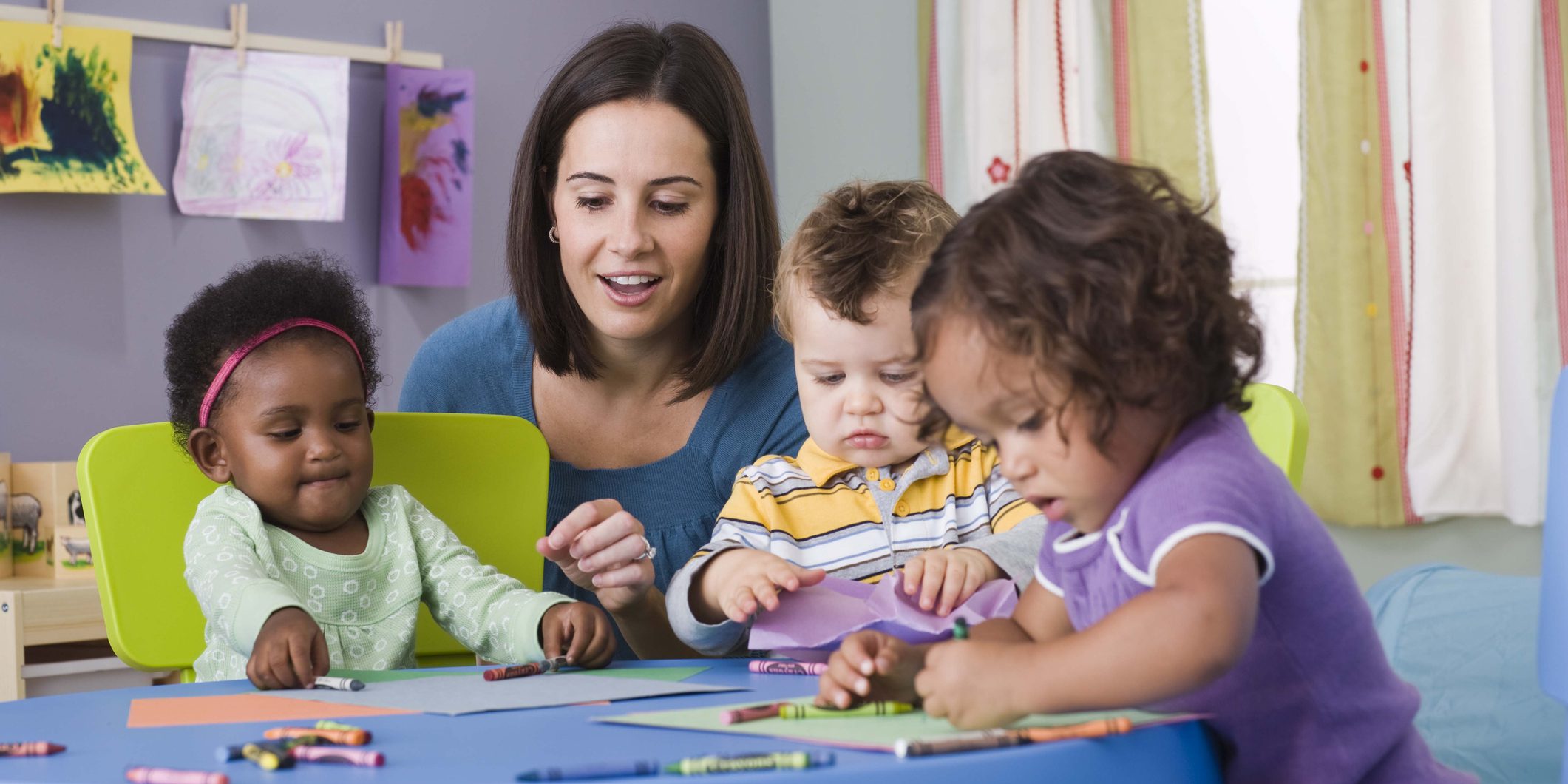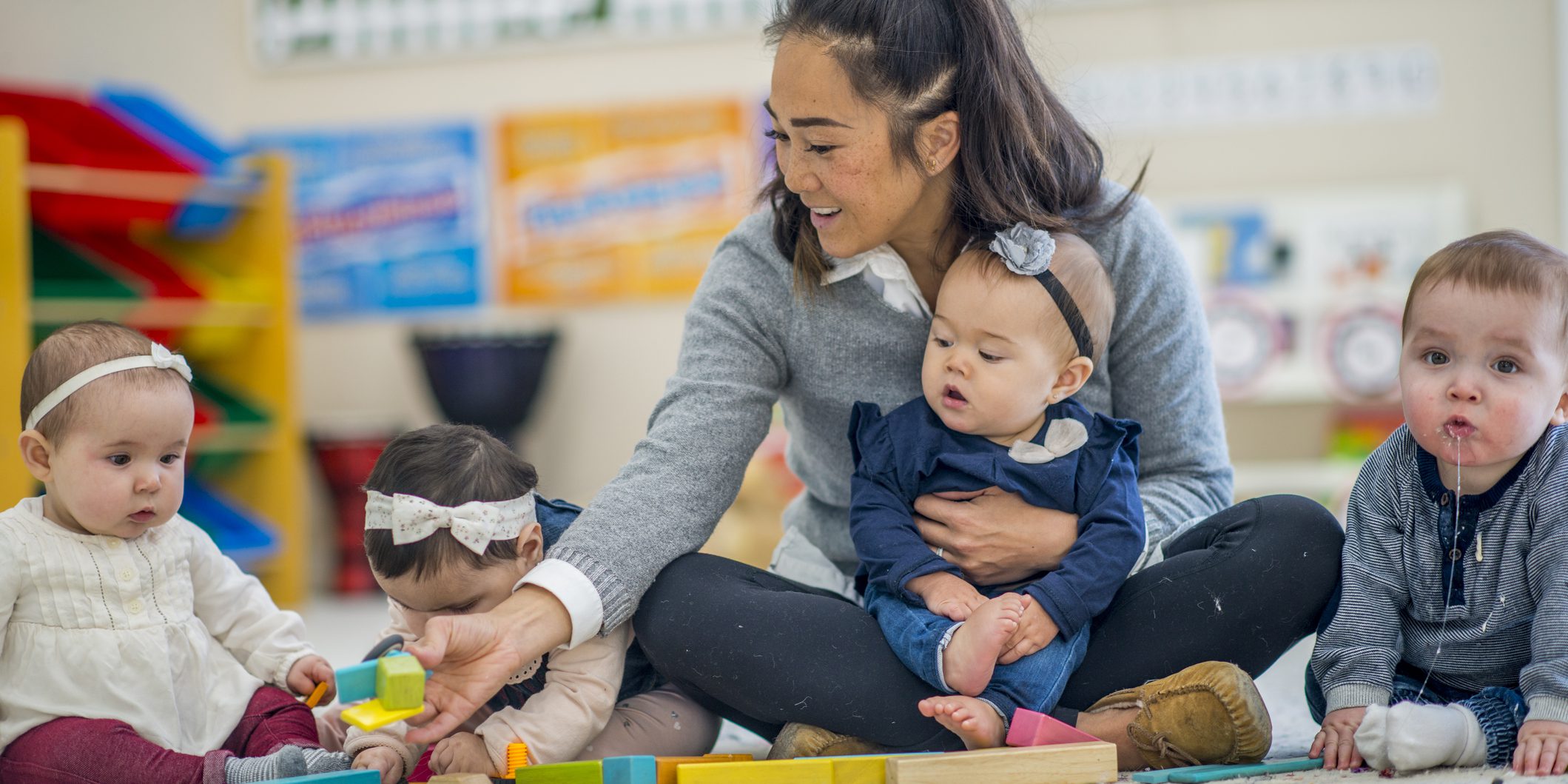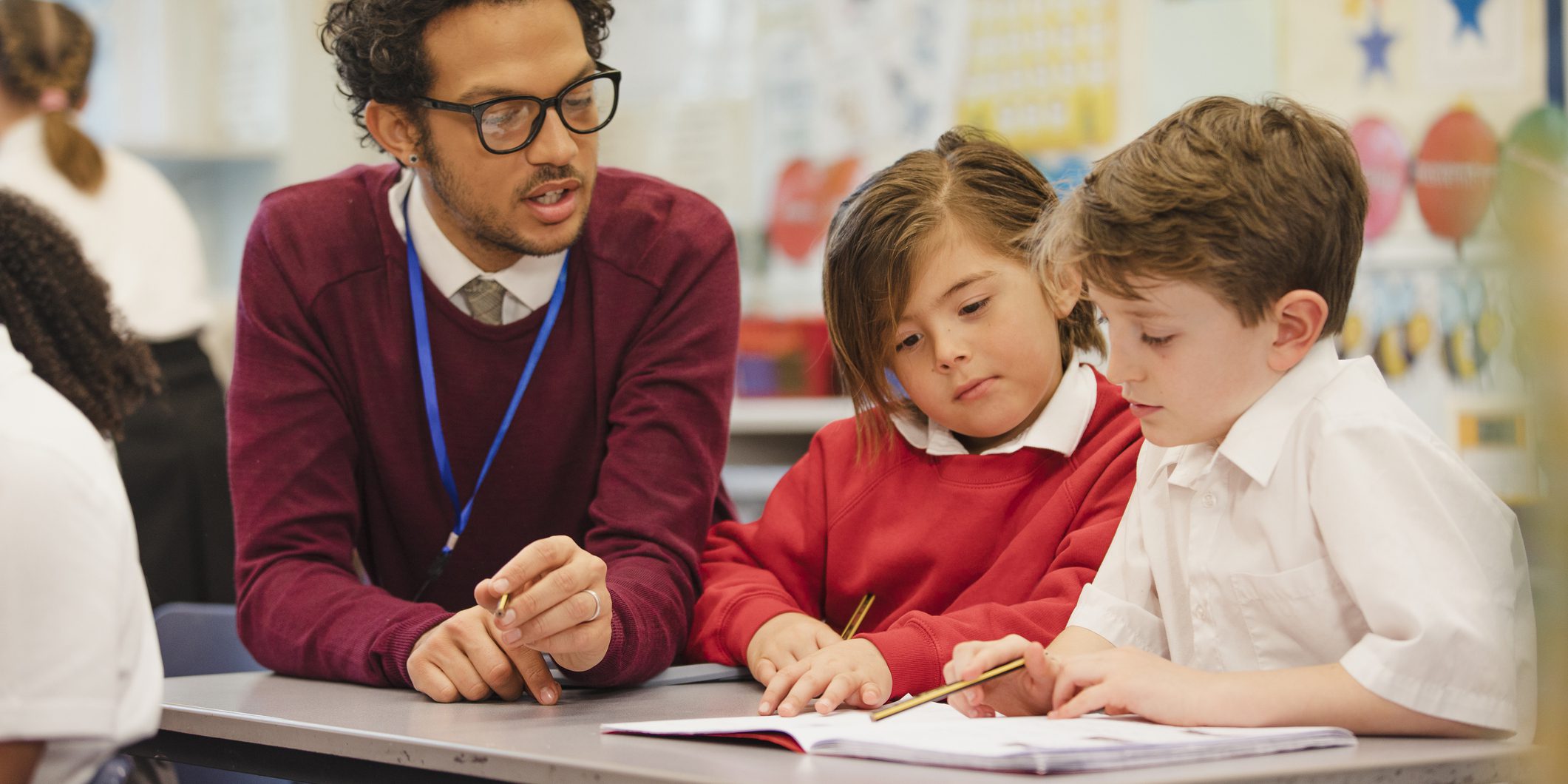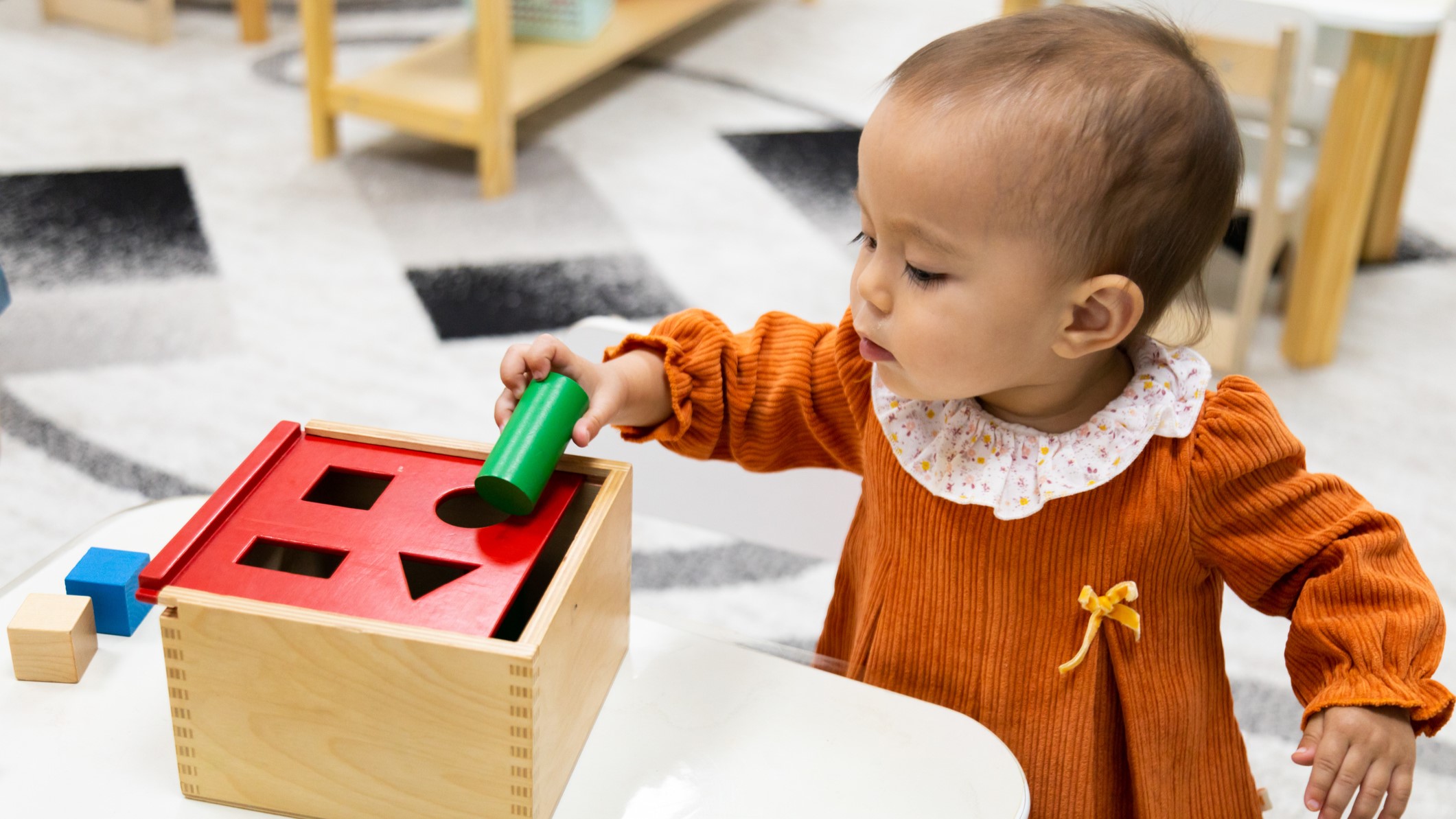This measure considers the variety of labels (specific nouns and verbs/actions) and descriptors (adjectives) the teacher includes in her verbal communication and how consistently the teacher uses them in various situations throughout the day, communicating with rich language, and narrating or thinking aloud about actions when responding to or interacting with children. Examples include:
- Rich Language (“This is a nice flower shop. You are selling a lot of different kinds of flowers—daffodils, roses, sunflowers. They are all so pretty! Who is the cashier? What does the cashier do?”)
- Specific Language During Care Routines (“It’s time to take your bottle. We need to get your bottle out of the refrigerator and then put the bottle in the bottle warmer to get the milk nice and warm.”)
- Thinking Out Loud (“Uh oh! We dropped the puzzle. Let’s put the pieces back. You have the airplane. I have the fire truck. Thank you for putting back the garbage truck. I will put the ambulance back. It is next to the fire truck.”)
Category: Category 2: Teacher-Child Interactions
Subcategory: Language Facilitation and Support
Examples
In this section you will find videos, images, and/or documents that can be used to better understand this measure. These examples can also be used in conversations between mentors, directors, and/or teachers to discuss how the program's current practices compare to these examples.
Video Example
The infant teachers are using descriptive language when labeling how the scarves are moving up and down. Labeling an object, activity, or action contributes to building young children’s vocabulary and they will be more likely to use those same words when communicating with others.
Age(s): Infant
Video Example
The teacher is using descriptive language when labeling where the toddler is compared to the tunnel being used. Labeling an object, activity, or action contributes to building young children’s vocabulary and they will be more likely to use those same words when communicating with others.
Age(s): Toddler
Video Example
The teachers are labeling objects in the book and within the outdoor learning environment. Labeling an object, activity, or action contributes to building young children’s vocabulary and they will be more likely to use those same words when communicating with others.
Age(s): Infant
Video Example
During an art activity, the teacher uses descriptive language to label how the paint feels. Labeling an object or action contributes to building young children’s vocabulary and they will be more likely to use those same words when communicating with others.
Age(s): Toddler
Video Example
This learning module from the WGBH Educational Foundation highlights the opportunities teachers have to use descriptive and rich language throughout the day. The module includes a video and a series of reflective questions for teachers to consider how to expose children to new words by describing the world around them.
Age(s): Toddler, Preschool
Video Example
In this video, the teacher uses descriptive language while the infant is playing with the toy keys. Labeling an object or action contributes to building young children’s vocabulary and they will be more likely to use those same words when communicating with others.
Age(s): Infant
Video Example
In this video, the teacher sings a song to describe the actions she and the children are taking while manipulating the play dough. Describing actions or objects contributes to building young children’s vocabulary and they will be more likely to use those same words when communicating with others.
Age(s): Toddler
Video Example
In this video, the teacher uses rich language when describing the outdoor learning environment and the actions she and the infant were taking. Describing an object, activity, or action contributes to building young children’s vocabulary and they will be more likely to use those same words when communicating with others.
Age(s): Infant
Video Example
The teacher uses language and a song to describe the actions the children are taking to complete the art activity. Describing an object, activity, or action contributes to building young children’s vocabulary and they will be more likely to use those same words when communicating with others.
Age(s): Toddler
Video Example
The teacher uses descriptive language to help the child to identify the right animal (the zebra). Describing an object contributes to building children’s vocabulary and they will be more likely to use those same words when communicating with others.
Age(s): Preschool
Practice Opportunities
These resources include tips, strategies, activities, or specific tools related to this measure that programs can put into practice.
Activity
This publication from WGBH Educational Foundation gives suggestions on how to use songs to label concepts and to narrate the actions children may take. Using songs to label actions and concepts build children’s vocabulary so they are more likely to use those same words when communicating with others.
Age(s): Toddler
Activity
This publication from WGBH Educational Foundation provides a list of songs teachers can sing to narrate the actions infants may take. Using songs to label actions build children’s vocabulary so they are more likely to use those same words when communicating with others.
Age(s): Infant
Publication
This guide illustrates 10 practices teachers can use to support the development of language and communication skills in infants and toddlers. One of the strategies mentioned is labeling an object, activity, or action. Using descriptive and rich language builds young children’s vocabulary and they will be more likely to use those same words when communicating with others.
Age(s): Infant, Toddler
Activity
In this activity, children test out which surface makes a toy car go the fastest. While children investigate, teachers can visit each station to describe the surfaces (e.g., smooth, bumpy), narrate what children are doing, and ask them questions about their observations.
Age(s): Preschool, School-age
Activity
Infants and toddlers will explore several different textures in this activity. As children feel each of the objects, the caregiver should use rich, descriptive language to build understanding. In the video included in this activity, the teacher uses many labels and descriptors such as “white, soft fur” and “rough like the cat’s tongue.”
Age(s): Infant, Toddler






